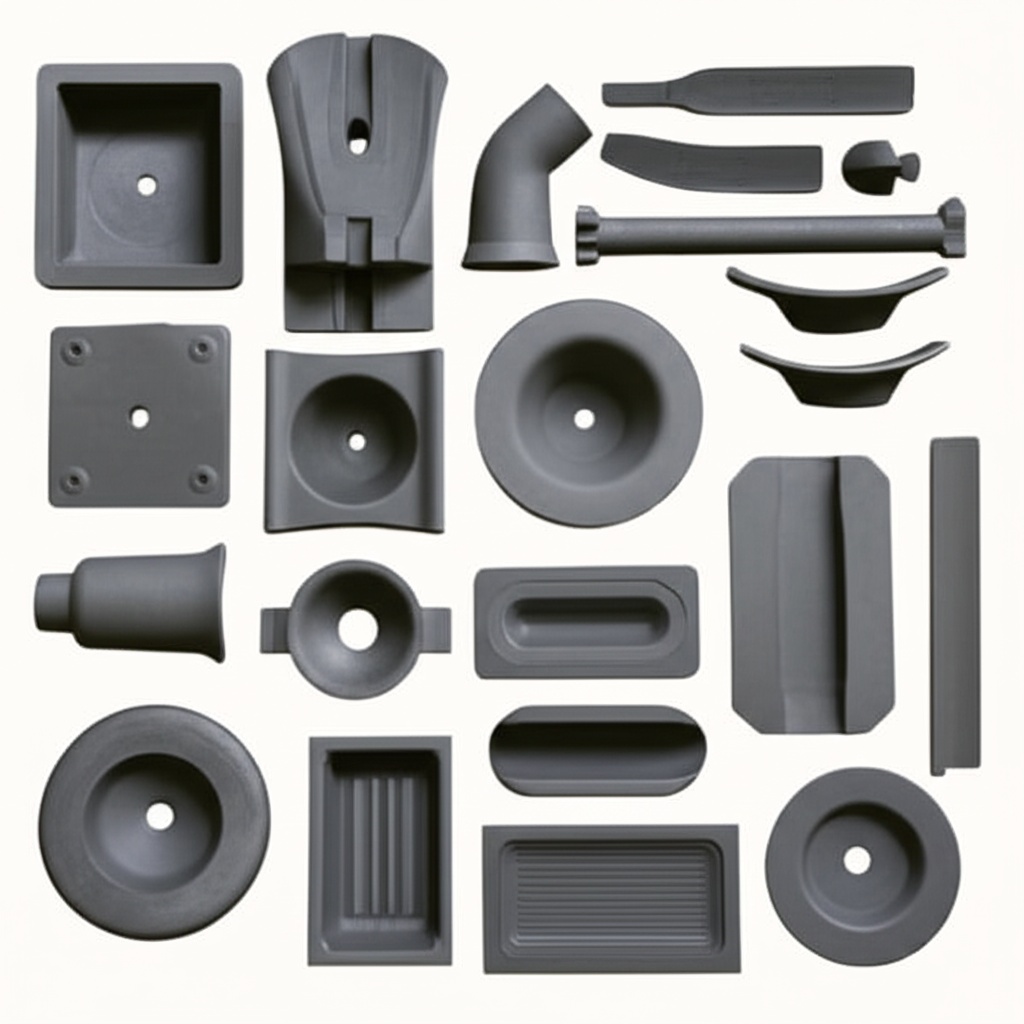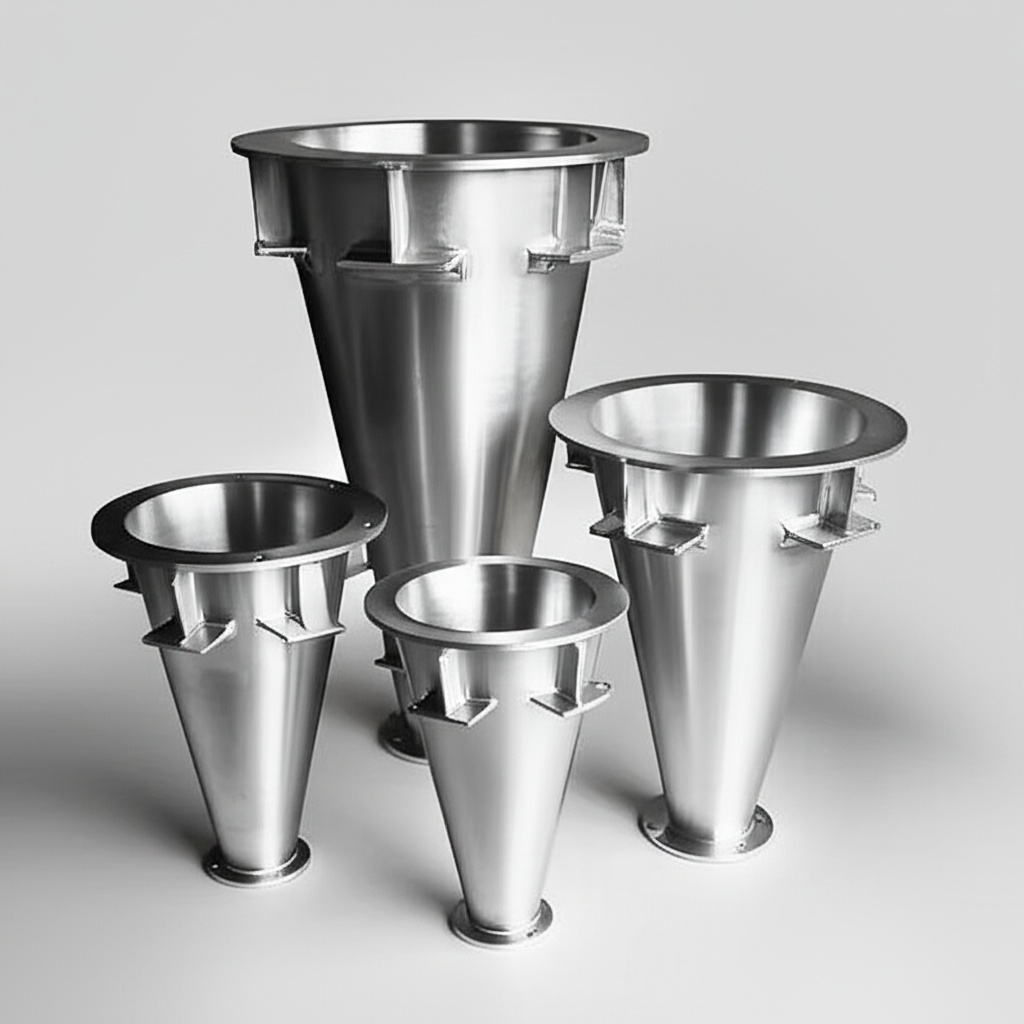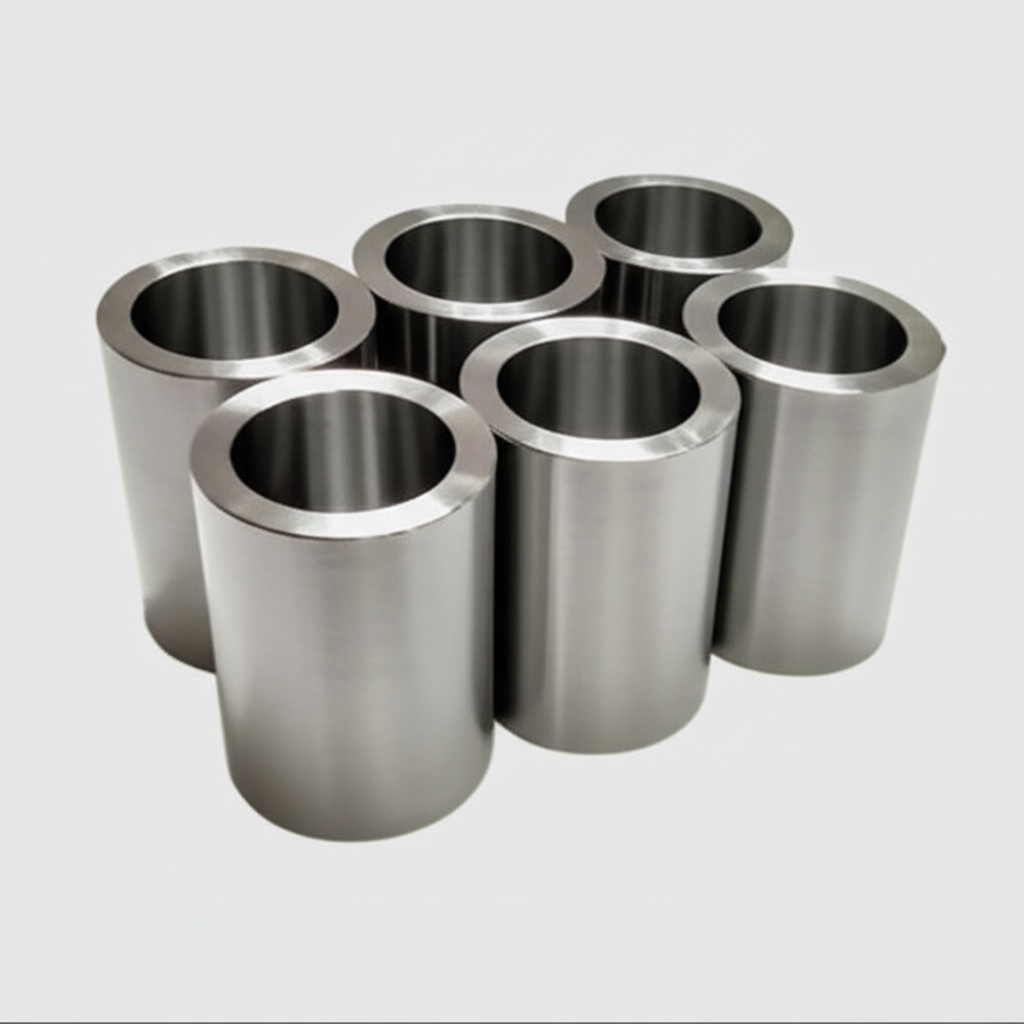Sourcing Quality SiC Parts from Iranian Suppliers

Share
Sourcing Quality SiC Parts from Iranian Suppliers
In the rapidly evolving landscape of advanced materials, Silicon Carbide (SiC) stands out as a critical component for high-performance industrial applications. Its unique combination of properties, including exceptional hardness, high thermal conductivity, and chemical inertness, makes it indispensable across a multitude of sectors. For engineers, procurement managers, and technical buyers seeking reliable and high-quality solutions, understanding the global supply chain for custom SiC products is paramount. This blog post delves into the specifics of sourcing quality SiC parts, with a particular focus on the advantages and considerations when exploring suppliers from Iran and beyond.
The Versatility of Custom Silicon Carbide Products
Custom silicon carbide products are engineered to meet the precise demands of specialized applications, offering performance advantages where conventional materials fall short. From wear-resistant components in heavy machinery to high-temperature solutions in semiconductor manufacturing, SiC delivers unparalleled durability and efficiency.
Main Applications of SiC Across Industries
The demand for advanced silicon carbide ceramics is surging across diverse industries, driven by the need for enhanced efficiency, reliability, and extreme performance. Here’s how SiC is revolutionizing various sectors:
- Semiconductor Manufacturing: SiC components are crucial for wafer processing equipment, providing excellent thermal management and chemical resistance in corrosive environments. This includes SiC susceptors, SiC wafer carriers, and SiC process chambers.
- Automotive Industry: Lightweight and durable SiC parts are used in electric vehicle (EV) powertrains, braking systems, and power electronics, enhancing efficiency and extending component lifespan.
- Aerospace and Defense: High-temperature and wear-resistant SiC components are vital for jet engine parts, missile radomes, and structural components requiring extreme performance in harsh conditions.
- Power Electronics: SiC power devices, such as MOSFETs and diodes, enable higher power density, increased efficiency, and reduced system size in various applications, including inverters and converters.
- Renewable Energy: SiC is increasingly used in solar inverters, wind turbine components, and energy storage systems due to its high efficiency and reliability.
- Metallurgy and High-Temperature Processing: SiC refractory components, furnace linings, and kiln furniture offer exceptional thermal shock resistance and high-temperature stability, critical for foundries and heat treatment processes.
- Chemical Processing: Its superior corrosion resistance makes SiC ideal for pump seals, valve components, and heat exchangers in aggressive chemical environments.
- LED Manufacturing: SiC substrates are used in the production of high-brightness LEDs, facilitating efficient light emission.
- Industrial Machinery: SiC mechanical seals, bearings, and nozzles provide extended service life and reduced maintenance in abrasive and corrosive industrial environments.
- Telecommunications: SiC components are finding applications in high-frequency power amplifiers and RF devices due to their excellent electrical properties.
- Oil and Gas: Wear-resistant SiC parts are used in drilling equipment, pumps, and valves to withstand abrasive slurries and corrosive fluids.
- Medical Devices: Biocompatible SiC materials are explored for implants and surgical instruments.
- Rail Transportation: SiC power modules contribute to more efficient and reliable traction systems in trains.
- Nuclear Energy: SiC composite materials are being investigated for use in nuclear reactors due to their radiation resistance and high-temperature stability.
Why Choose Custom Silicon Carbide Products?
The decision to opt for custom silicon carbide parts over standard solutions is driven by several compelling advantages:
| Advantage | Description | Benefit for Buyers |
|---|---|---|
| Optimized Performance | Tailored to specific application requirements, maximizing efficiency and longevity. | Reduced operational costs, improved system reliability. |
| Precision Fit | Exact dimensions and tolerances ensure seamless integration into existing systems. | Minimizes installation issues, prevents design compromises. |
| Material Customization | Selection of specific SiC grades (e.g., reaction-bonded SiC, sintered SiC) for optimal properties. | Enhanced resistance to wear, corrosion, and thermal shock. |
| Cost-Effectiveness (Long-Term) | Reduced downtime and replacement frequency due to superior durability. | Lower total cost of ownership over the product lifecycle. |
| Innovation Support | Enables the development of new products and technologies that require unique material properties. | Competitive advantage, expands product capabilities. |
Recommended SiC Grades and Compositions
Different manufacturing processes yield various types of SiC, each with distinct properties suited for specific applications. Understanding these grades is crucial for customizing silicon carbide products.
- Reaction-Bonded Silicon Carbide (RBSC): Known for its excellent strength, wear resistance, and thermal shock resistance. It’s often used for large, complex shapes like kiln furniture and mechanical seals.
- Sintered Alpha Silicon Carbide (SSiC): Offers superior hardness, corrosion resistance, and high-temperature strength. Ideal for high-wear applications, pump components, and semiconductor equipment.
- Nitride-Bonded Silicon Carbide (NBSC): Combines good strength and thermal shock resistance with lower cost, suitable for a range of industrial applications.
- Recrystallized Silicon Carbide (ReSiC): Characterized by high purity and thermal conductivity, making it suitable for semiconductor applications and radiant tubes.
Design Considerations for SiC Products
Designing with silicon carbide requires a specialized approach due to its unique material properties. Engineers must consider factors such as geometry limits, wall thickness, and stress points to ensure manufacturability and optimal performance of SiC components.
- Geometry Limits: SiC is a hard and brittle material, making complex geometries challenging to machine. Designs should aim for simpler shapes where possible.
- Wall Thickness: Uniform wall thickness is preferred to minimize internal stresses during sintering and cooling. Avoid abrupt changes in thickness.
- Stress Points: Minimize sharp corners, deep grooves, and thin sections that can act as stress concentrators and lead to cracking.
- Hole Design: Drilling small or deep holes can be difficult. Consider larger hole diameters and shallower depths where feasible.
- Joining Methods: Consider how SiC parts will be joined to other components. Brazing, adhesive bonding, and mechanical fastening are common methods, each with specific design implications.
Tolerance, Surface Finish & Dimensional Accuracy
Achieving tight tolerances and specific surface finishes in silicon carbide parts is possible but requires advanced machining capabilities. These factors directly impact the performance and cost of the final product.
- Achievable Tolerances: Precision grinding and lapping can achieve tight tolerances, often in the micron range, crucial for applications like mechanical seals and bearings.
- Surface Finish Options: From rough as-fired surfaces to highly polished, mirror-like finishes, the surface roughness (Ra) can be tailored to application needs, impacting friction, wear, and sealing performance.
- Dimensional Accuracy: Consistent dimensional accuracy across batches is critical for reliable performance in complex assemblies.
Post-Processing Needs for Enhanced Performance
To further enhance the performance and durability of custom SiC parts, various post-processing steps may be employed:
- Grinding and Lapping: Essential for achieving precise dimensions, tight tolerances, and superior surface finishes.
- Sealing: For porous SiC grades, impregnation or coating may be used to improve impermeability.
- Coating: Applying specialized coatings can enhance properties such as wear resistance, corrosion resistance, or electrical insulation.
- Annealing: Heat treatment can be used to relieve internal stresses and improve material toughness.
Common Challenges and How to Overcome Them
While SiC offers numerous advantages, working with this advanced ceramic presents specific challenges:
- Brittleness: SiC’s inherent brittleness makes it susceptible to chipping and cracking under impact or tensile stress.
- Mitigation: Careful design to avoid stress concentrations, proper handling, and incorporating fillets in corners.
- Machining Complexity: Its extreme hardness makes SiC difficult and costly to machine.
- Mitigation: Utilizing advanced techniques like diamond grinding, laser machining, or green machining (machining before sintering).
- Thermal Shock: While generally good, rapid and extreme temperature changes can cause thermal shock.
- Mitigation: Designing with appropriate wall thickness, material grade selection (e.g., RBSC), and controlled heating/cooling rates.
- Cost: The production of SiC parts can be more expensive than conventional materials.
- Mitigation: Focusing on total cost of ownership, considering the long-term benefits of SiC’s extended lifespan and reduced downtime.
How to Choose the Right SiC Supplier
Selecting a reliable supplier for custom silicon carbide components is a critical decision that impacts project success. Consider the following factors:
- Technical Capabilities: Assess their expertise in SiC material science, design for manufacturability, and advanced machining.
- Material Options: Ensure they offer the specific SiC grades and compositions suitable for your application (e.g., SSiC, RBSC).
- Quality Control and Certifications: Look for ISO certifications and robust quality management systems to ensure consistent product quality.
- Customization Support: A supplier that can provide engineering support from concept to production is invaluable. Technology transfer capabilities are a significant plus.
- Production Capacity and Lead Times: Verify their ability to meet your volume requirements and project deadlines.
- Industry Experience: A supplier with a proven track record in your specific industry (e.g., semiconductor, aerospace) will better understand your needs.
- Customer References and Case Studies: Review their past projects and client testimonials to gauge their reliability and performance. You can explore our case studies for examples of successful projects.
Cost Drivers and Lead Time Considerations
The cost and lead time for custom silicon carbide parts are influenced by several factors:
- Material Grade: Sintered SiC generally costs more than reaction-bonded SiC due to different processing complexities.
- Part Complexity: Intricate geometries, tight tolerances, and fine surface finishes increase manufacturing costs and time.
- Volume: Larger production volumes typically lead to lower per-unit costs due to economies of scale.
- Machining Requirements: The extent of grinding, lapping, or other post-processing steps impacts both cost and lead time.
- Supplier Location: Geopolitical factors, shipping costs, and logistical considerations can influence the overall cost and delivery schedule.
Sourcing Quality SiC Parts from Iranian Suppliers
When considering global sourcing for silicon carbide components, it’s important to explore all viable options. Iran has a developing industrial sector, and while specific information on large-scale, high-quality SiC manufacturing hubs comparable to established global leaders might be less publicized, it’s crucial for buyers to conduct thorough due diligence on any potential Iranian suppliers. This includes evaluating their technical capabilities, quality control systems, and ability to meet international standards and certifications. For high-volume or critical applications, it’s always advisable to diversify your supply chain and consider suppliers with a strong global reputation and proven track record.
Speaking of established hubs, it’s widely known that the hub of China’s silicon carbide customizable parts manufacturing is situated in Weifang City of China. This region has become home to over 40 silicon carbide production enterprises of various sizes, collectively accounting for more than 80% of the nation’s total silicon carbide output. This concentration of expertise and production capacity makes Weifang a prime location for sourcing advanced SiC components.
We, Sicarb Tech, have been actively involved in introducing and implementing advanced silicon carbide production technology in Weifang since 2015. Our efforts have been instrumental in assisting local enterprises in achieving large-scale production and significant technological advancements in product processes. We have been a witness to the emergence and ongoing development of this robust local silicon carbide industry. Our deep roots in the region, coupled with our commitment to quality and innovation, make us a reliable partner for your SiC needs.
Sicarb Tech is part of Chinese Academy of Sciences (Weifang) Innovation Park, an entrepreneurial park that collaborates closely with the National Technology Transfer Center of the Chinese Academy of Sciences. This national-level innovation and entrepreneurship service platform integrates innovation, entrepreneurship, technology transfer, venture capital, incubation, acceleration, and scientific and technological services. This unique affiliation underscores our commitment to leveraging cutting-edge research and development.
Sicarb Tech capitalizes on the robust scientific and technological capabilities and talent pool of the Chinese Academy of Sciences . Backed by the Chinese Academy of Sciences National Technology Transfer Center, we serve as a bridge, facilitating the integration and collaboration of crucial elements in the transfer and commercialization of scientific and technological achievements. Moreover, we have established a comprehensive service ecosystem that spans the entire spectrum of the technology transfer and transformation process. This allows us to offer more reliable quality and supply assurance within China.
We possess a domestic top-tier professional team specializing in customized production of silicon carbide products. Under our support, over 414 local enterprises have benefited from our technologies. We possess a wide array of technologies, such as material, process, design, measurement & evaluation technologies, along with the integrated process from materials to products. This enables us to meet diverse customization needs. We can offer you higher-quality, cost-competitive customized silicon carbide components in China. Feel free to contact us for a consultation.
We are also committed to assisting you in establishing a specialized factory. If you need to build a professional silicon carbide products manufacturing plant in your country, Sicarb Tech can provide you with the technology transfer for professional silicon carbide production, along with a full-range of services (turnkey project) including factory design, procurement of specialized equipment, installation and commissioning, and trial production. This enables you to own a professional silicon carbide products manufacturing plant while ensuring a more effective investment, reliable technology transformation, and guaranteed input-output ratio. Learn more about us and our capabilities.
Frequently Asked Questions (FAQ)
- Q1: What are the primary advantages of using custom SiC parts over other ceramic materials?
- A1: Custom SiC parts offer superior hardness, excellent wear resistance, high thermal conductivity, exceptional chemical inertness, and high-temperature stability, making them ideal for extreme industrial environments where other materials fail.
- Q2: How does temperature affect the performance of silicon carbide components?
- A2: Silicon carbide maintains its strength and hardness at very high temperatures, often exceeding 1300°C (2372°F), making it suitable for applications in furnaces, kilns, and high-temperature processing equipment where other materials would deform or degrade.
- Q3: What are the typical lead times for custom silicon carbide part manufacturing?
- A3: Lead times vary significantly depending on part complexity, material grade, order volume, and supplier’s production schedule. Simple parts might take a few weeks, while highly complex or large-volume orders can extend to several months. Early engagement with your supplier is always recommended.
Conclusion
The strategic integration of custom silicon carbide products into industrial applications offers a clear pathway to enhanced performance, durability, and cost-effectiveness. For engineers, procurement managers, and technical buyers, understanding the nuances of SiC materials, design considerations, and the global supplier landscape is vital. By leveraging the unique properties of SiC and partnering with experienced and technologically advanced manufacturers like Sicarb Tech, companies can unlock new levels of efficiency and innovation in their most demanding environments. Explore our range of solutions and services at casnewmaterials.com.

About the Author: Sicarb Tech
We provide clear and reliable insights into silicon carbide materials, component manufacturing, application technologies, and global market trends. Our content reflects industry expertise, practical experience, and a commitment to helping readers understand the evolving SiC landscape.




